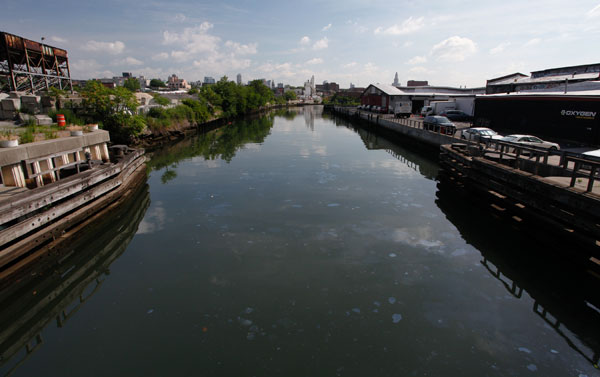
With hundreds of miles of combined sewers that carry both sewage and stormwater, massive overflows are common after even small rainfalls, fouling areas like the Gowanus Canal.
By the end of this summer, nearly 6,000 people will have splashed head-first into the water as part of public swim events in the Hudson River Estuary and New York Harbor. Thousands more will have jumped in from boats and shorelines throughout the Hudson’s watershed.
These are the same waters where our sewage is discharged. With modern sewage treatment, that need not deter people from the joy of bathing in the inspiring setting of our river. The point of sewage treatment is to eliminate risks.
The problem is that our infrastructure is not doing its job – not everywhere.
In 2008, New York State estimated the cost of investing in public wastewater over 20 years at $36 billion dollars. (Privately owned infrastructure would require an additional $9 billion.)
The cost today is certainly greater, because we have failed at all levels of government to meet the documented need. The last estimate by the state Comptroller found us nearly $800 million behind in needed investments in a single year.
At the same time, we’ve cut resources for state government to the bone, leaving the Department of Environmental Conservation hobbled in its ability to enforce laws that would protect both wildlife and people. It’s shameful – but no wonder – that there has been a 19 percent increase in facilities operating in “significant non-compliance” with water pollution discharge permits, but a 64 percent decrease in enforcement actions taken against polluters.
The consequences are clear. Our infrastructure is failing because of age, neglect or outdated design. Pipes overflow with raw sewage in rain. Pump stations fail, leading to overflows. Plants are overwhelmed, resulting in bypasses that foul the water where we swim, boat and fish.
New York City is emblematic for the problem of outdated infrastructure. With hundreds of miles of combined sewers that carry both sewage and stormwater, massive overflows are common after even small rainfalls, fouling areas like the Gowanus Canal, Newtown Creek and Flushing Bay. These should be neighborhood assets, not dumping areas – and people are increasingly expressing their desire for safe recreational water by voting with their paddles. While the city continues to maintain its infrastructure, plans to upgrade and modernize the system need to be implemented.
Beyond New York City, at least 100 publicly owned sewage treatment plants in the Hudson River Estuary Watershed are in violation of pollution discharge permits – 15 percent of them in “significant” violation, according to Environmental Protection Agency data.
The state’s Sewage Pollution Right to Know Act has begun to lift the veil on this “out of sight, out of mind” problem. We all now have access to much of the information about hazardous sewage discharges that local plant operators and the state have had for decades. The law has resulted in a sobering accounting of more than 100 discharges each month, on average.
Riverkeeper and our partners conduct the most extensive water quality monitoring project of its kind in the region, and the results are eye-opening. Much of the Hudson River, after a period of dry weather, is safe for swimming, with very low levels of contamination. But the water near some neighborhoods shows evidence of chronic contamination, the creeks that feed the Hudson are often more highly contaminated and rainfall triggers massive pollution that degrades water quality widely.
Another result of our failure to invest in infrastructure is lost economic opportunity. In many communities – particularly smaller cities and villages where we ought to encourage new development to avoid sprawl – progress is too often stalled because sewage treatment plants are at or over capacity, or in a state of chronic failure. These failures harm other businesses that rely on clean water, from mom-and-pop stand-up paddleboarding rental shops to microbreweries and microchip manufacturers.
New York State has a history of leadership on this issue. Fifty years ago this year, voters approved the Pure Waters Bond Act, a predecessor of the Clean Water Act, which set the national goal of making all our waters safe for swimming. Last year, legislators approved, and Gov. Andrew Cuomo signed, the New York State Water Infrastructure Improvement Act, providing sorely needed grants to communities that have struggled to invest adequately, in part due to the state’s tax cap.
The $50 million in new grants to be committed this year are welcome and needed. But it’s only a first step. The overall gap in funding for clean water projects next year will still be hundreds of millions of dollars bigger than it was this year.
The question now is whether we let the last generation’s investment go to waste – along with our waters – or whether we invest now to give the next generation cleaner water and better health.
Dan Shapley is Riverkeeeper’s Water Quality Program Manager








